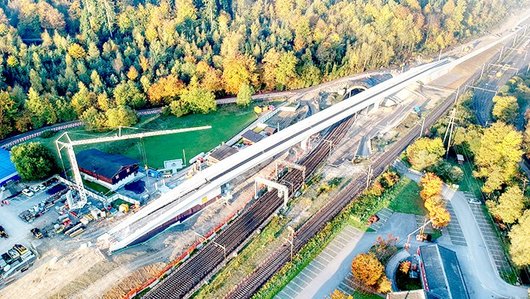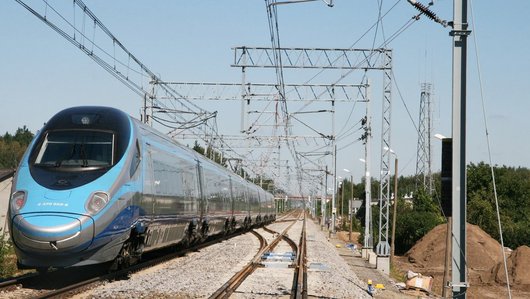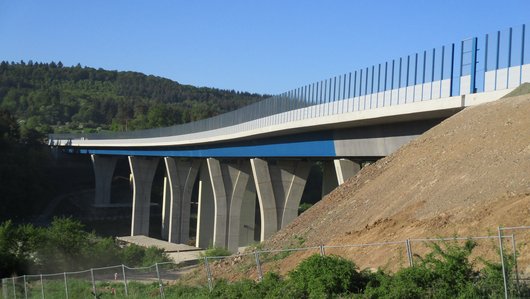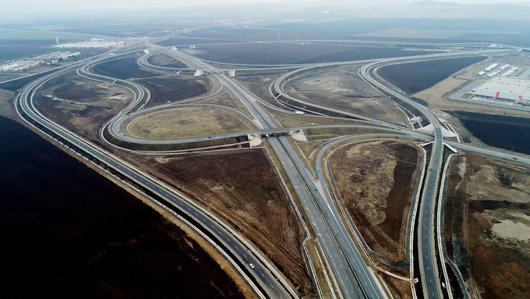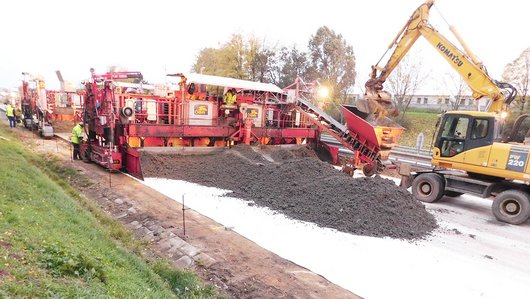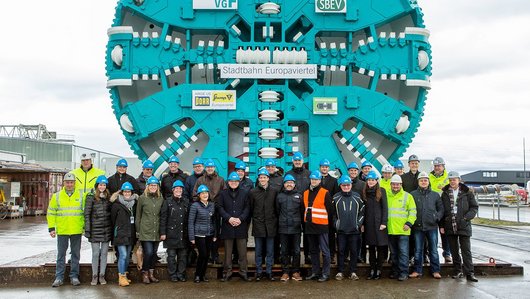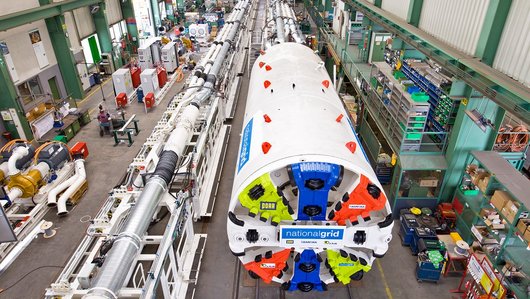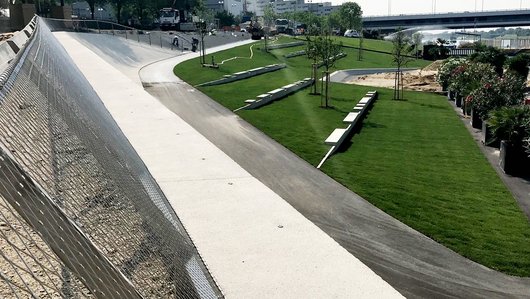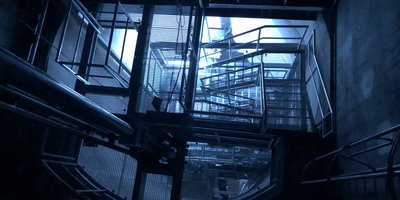
Sylvenstein Reservoir headrace tunnel
In Bavaria’s Isar Valley, PORR carried out badly needed renovations on the Sylvenstein Reservoir headrace tunnel.
The Sylvenstein Reservoir headrace tunnel had been operating for almost sixty years. However, several years’ floods had left their mark: it was time for a general renovation. The project was complex and challenging, but PORR had the advantage of experience: the company had worked on repairs to the sluice tunnel just a year earlier.
-
EmployerWasserwirtschaftsamt Weilheim, Pütrichstraße 15 , D-82362 Weilheim
-
ContractorPORR Bau GmbH . NL Tirol
-
ArchitectRegierungsbaumeister Schlegel GmbH & Co. KG (München)
-
Order typeBaumeisterarbeiten
-
Project typeStructural civil engineering
-
Project scopeRenovation of the Sylvenstein Reservoir headrace tunnel
-
Order volumeEUR 2,9m
-
Construction start11/2018
-
Construction end06/2020
We drew on the expertise and knowledge gained during the Sylvenstein Reservoir sluice tunnel renovation two years ago to master the challenges of the subsequent, technically complex and intricate renovation project in the 42m-deep wet shaft under cramped conditions. We applied our accumulated experience and competence to complete the headrace tunnel project successfully.
Overview
The Sylvenstein Reservoir lies 10km to the south of the town of Lenggries, in the Isar Valley in Bavaria. In the gorge between Sylvenstein and Hennenköpfl, a 48m-high embankment dams the River Isar, creating a state-owned reservoir which serves as flood protection for the river. During the sixty years that it has been operating, the reservoir has exerted heavy loads on the hydraulic steel structure, the more so after the dam structure was elevated, raising the reservoir level. The 2013 flood put particular pressure on the structure, and so the sluice tunnel, headrace tunnel and numerous flood relief structures were in need of comprehensive renovation.
The key elements being renovated were the sluices and their drive mechanisms, along with various associated components including armouring for the tunnels and recesses, walking surfaces, steps and concrete platforms. PORR had already renovated the sluice tunnel a couple of years earlier – between August 2016 and July 2017. This prior experience was one of the reasons Wasserwirtschaftsamt Weilheim selected PORR for the technically complex, intricate renovation work to the headrace tunnel. Work began in November 2018, and in June 2020 the team successfully completed the renovation.
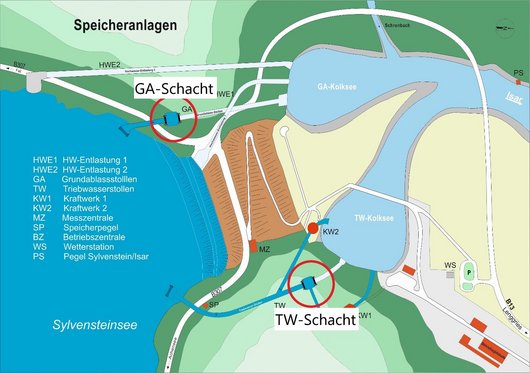

Preliminary work and safety measures
Before the structural work could begin, PORR had to build temporary access roads to the tunnels – these would be essential for the construction work. Approximately 3,500m³ of backfill and 400t of armourstone went into the roads. In parallel, an emergency plan was developed that would bring the reservoir to operational status within a few hours of a flood. This plan specified actions and preventive measures on the construction site. If water flows were imminently expected to increase, it would be necessary to flood the shaft that was being worked on, and the plans detailed the exact circumstances and reporting flows for this case. It had to be possible to dismantle and remove all the construction equipment and materials within a matter of hours.
The team worked closely with PORR’s Occupational Health and Safety department to set up evacuation points and develop rescue and evacuation plans. In addition, everyone in the team received intensive training to ensure they were familiar with the necessary safety measures.
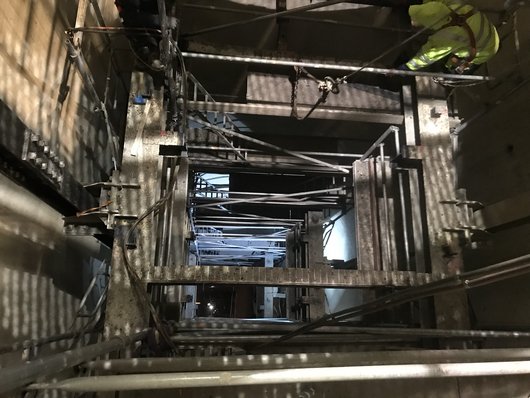

Removing the top and bottom sluice gates
According to the renovation plans, the existing 8m-wide, 42m-deep wet shaft was to remain in place. However, the top and bottom sluice gates and their drive mechanisms were to be replaced. The team began by removing all the steel parts that were no longer needed. The sluice gates, 4.5m high and 2.8m wide and weighing some 36 tonnes, were moved using electromechanical winches. These were positioned in a cavern that was only accessible via a steep and narrow – just 3m wide – route blasted into the rock. The bottom sluice gate was removed first – this was a two-part roller sluice gate with a hydraulic drive unit installed in the centre. About 560m³ of interior scaffolding, plus a gantry with a 45m-long electric chain hoist, were installed for the dismantling and demolition work. The equipment was used to lift out the steel parts, slice them up and transport them away for stripping. Once the new bottom sluice gate had been manufactured and installed with the hydraulic steel construction, work began on demolition of the top sluice gate.
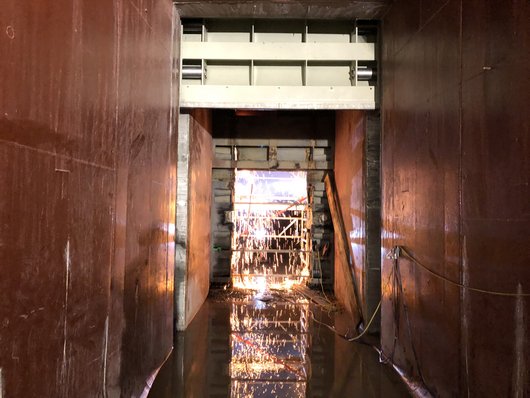

Dismantling the winches
The next milestone was dismantling the winches on which the lifting rods (and on these, the sluice gates) were mounted. The objective was to remove the winches without damage, overhaul them, and then store them properly until they could be returned to the employer for display on the Sylvenstein Reservoir site.


Concreting the cavern floor
One major challenge PORR faced was concreting the cavern floor. Due to tricky structural conditions, the concreting had to be done in a number of stages. To ensure characteristics suitable for the structural loads, approximately 2,300kg ( ≈ 260m) of CFRP fins had to be glued into crosses on the underneath of the cavern floor and anchored in place.
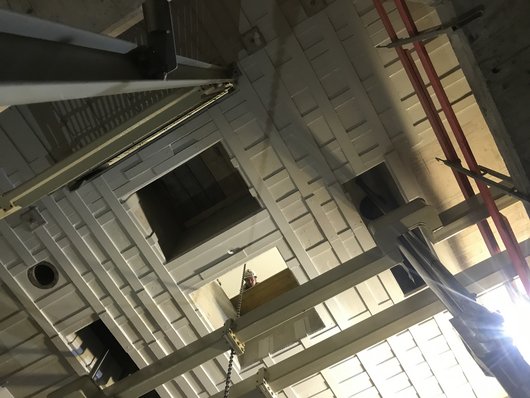

Stripping the steel parts
The teams coordinated with PORR Umwelttechnik for the task of stripping the old asbestos paint from the removed steel parts on the construction site and preparing them for subsequent disposal. A total of 29t of asbestos-contaminated grit and 65t of steel were professionally treated and disposed of.
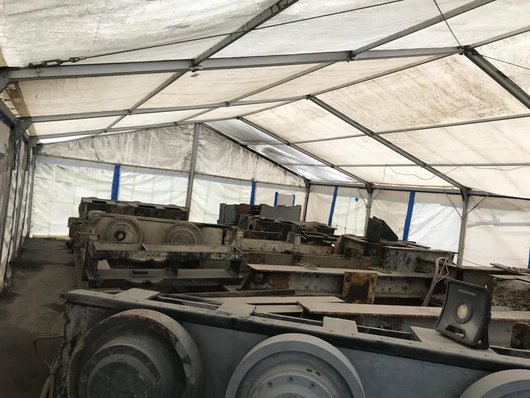

Summary
PORR was able to draw on the experience gained from the earlier sluice tunnel renovation to master the challenges of the technically complex headrace tunnel renovation. This meant we could offer added value in terms of occupational safety, construction site logistics and timing. The renovated tunnel was handed over to the client on schedule in June 2020.
Technical data
-
Backfill for access roads3,500 m³
-
Armourstone400 t
-
Steel fins for cavern reinforcement2.3 t
-
Interior scaffold560 m³


